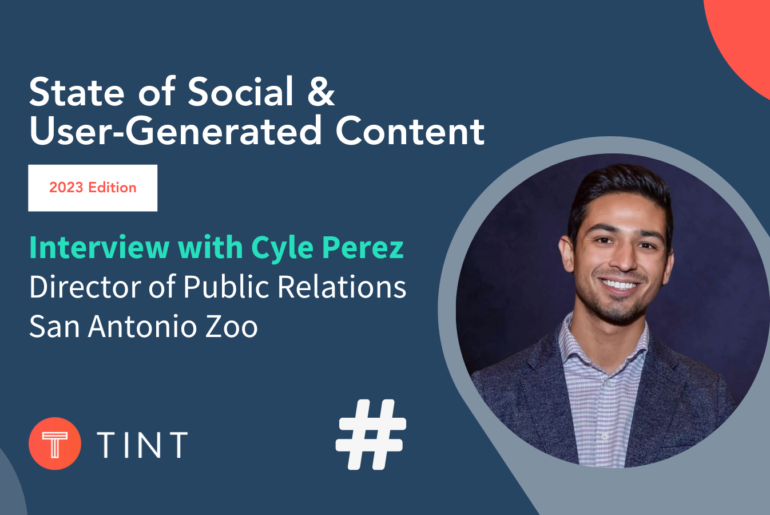In the world of media effects research, one theory that has garnered a lot of attention is that of social cognitive theory. What is social cognitive theory, you ask? In 2019, Marina Krcmar, an associate professor in the Communication Department at Wake Forest University, detailed this theory in Media Effects: Advances in Theory and Research (4th Edition). She writes, “Social cognitive theory, in simplest terms, explains how humans can learn and be motivated to perform behaviors by observing others.”
If we are truly influenced by observing others, then social cognitive theory would have wide application in relation to user-generated content (UGC) and the behavior brand’s want the audience to replicate. After all, when we look at influencers’ and social media users’ posts and photography, we watching what those folks do: the products they use, the places they travel and the events they attend. This blog post highlights some of the key points of social cognitive theory that Krcmar presented in her book as well as impacts on UGC and influencer marketing.
Four Processes Required for Modeling Observed Behavior
Observing behavior is not enough to merely replicate it. Krcmar says that there are four processes that we must go through before we adopt the behavior.
First, we have to make sure that we’re paying attention. As Krcmar notes, “If a behavior is not observed and attended to, then it cannot be imitated.” This is where partnering with an influencer—even a smaller scale micro or nanoinfluencer—can really help a brand. Those influencers already command the attention of a loyal audience, so your brand is already able to overcome the first hurdle when it comes to getting people to actually pay attention to what’s happening.
But paying attention is not enough—to model behavior we must also retain the message we saw. By showcasing authentic, user-generated content in your social channels and online, you increase the frequency with which your followers are exposed to the message. This repetition of your message makes it more likely to be retained. And through securing the user content rights, you can repurpose the UGC in your paid digital marketing efforts to further drive audience retention.
“Motor reproduction” is the third process that drives a user to adopt a behavior—a person must have the physical skills needed to perform the modeled behavior. This won’t be applicable for most lifestyle products but could make sense for more adventure and sporting products. Put simply, individuals without the physical skills to use your product will not become a consumer.
Motivation is the final key to adopting a behavior. As Krcmar writes, “unless he or she wants to actually perform the behavior, modeling does not occur.” This motivation is largely influenced by what researchers term “self-efficacy,” or the perception that the individual could actually reproduce that behavior they’ve observed.
Consider a dieting product, such as Weight Watchers. Even if the dieting behavior has caught the attention of an individual, they have retained the message and have the physical skills to model it, if the person lacks the conviction that “I can follow this diet,” there’s no way they’re becoming a Weight Watchers customer. Grounding a consumer in the belief that they too can “do this” to achieve results, a lifestyle or experience is key in getting a person to model behavior. This is where UGC can have the most impact.
Identification with the Influencer and Other Consumers is Key
The key to self-efficacy, says Krcmar, is seeing people who look like us already modeling a behavior. She writes, “In short: Successfully modeled actions performed by people like us make us feel like we can do the same, as can verbal encouragement and our own internal sense of confidence.”
This is why user-generated content marketing strategies are so powerful for brands. By showing a wide variety of people using your products or services, prospective customers are able to see themselves in that media. And that can translate to sales.
They see a person with a similar social stature clutching a designer purse and realize that dream is within reach. Seeing someone with a similar body shape and size going through a dieting program makes them believe that decreasing their weight is achievable. And seeing folks from a similar walk of life staying at a luxury hotel and destination can make them believe that is attainable.
With social media, a brand’s spokesperson has evolved from being purely a famous actor to now being either (1) a normal person who’s part of an individual’s real-life network creating online posts of their brand experience, or (2) an admired online celebrity who may (or may not) be contracted as a brand influencer.
“In both cases,” Krcmar writes, “identification with the person modeling the behavior would likely be stronger than for an actor on television or in a film with whom the user may not identify. Thus, the self-selecting nature of social media audiences might actually increase modeling outcomes.”
Start Your UGC Strategy with TINT
Social cognitive theory is only one of many media effects theories, but it is widely accepted by communication researchers. As the research has illuminated, we as humans clearly wish to model observed behaviors. And it is not a far leap to see that user-generated content can be a major driver in eliciting a number of effects on an audience.
If your brand is looking to start a UGC program, TINT is here to help. We not only have a platform to aggregate user-generated content that you can easily select to repurpose on your website, social media accounts or digital signage, we also offer a user rights management system to ensure that you secure the permission to repurpose those images. Schedule a demo to learn more about TINT today.




